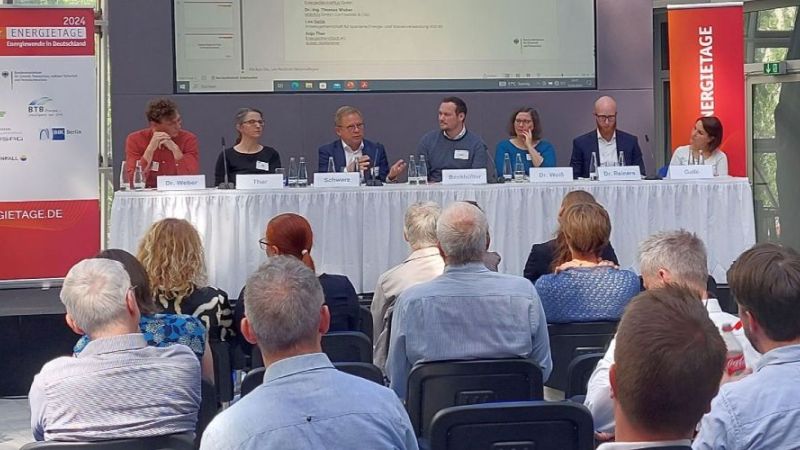 © Eike Köhnen/HZB
© Eike Köhnen/HZB
Photovoltaics
Perovskite silicon tandem solar cell reaches new record
The Helmholtz-Zentrum Berlin has developed a solar cell with an efficiency of 29.15 per cent from the materials perovskite and silicon.
The record-breaking cell has a laboratory scale with an active area of one square centimetre. A silicon cell forms the bottom cell, on which the perovskite layer with its contact layers is applied as the top cell. The result is a so-called monolithically integrated perovskite tandem solar cell. It was developed by two science teams at the Helmholtz-Zentrum Berlin (HZB), one of them a junior research group funded by the German Federal Ministry of Education and Research (BMBF). For the record-breaking cell, the scientists developed and optimised functional contact and intermediate layers and adapted the perovskite absorber layer accordingly. Since the two semiconductor materials capture different wave length ranges of light, together they can convert more light output into electrical power - here even 29.15 per cent, a new and significant world record.
The fundamental work on perovskites, a material which is comparatively new in photovoltaic research, is seamlessly transferred to application-oriented research and development. PersiST, a project at HZB sponsored by the BMWi, also contributed to the new record. Another project, P3T, is now building on this.
BMWi funding projects share in success
In PersiST, which was completed in autumn 2019, HZB scientists adapted the manufacturing processes for both perovskite and silicon cells: "For example, the front and rear sides of silicon cells are normally textured, roughened so to speak", explains Dr. Lars Korte, project manager at HZB. However, the processes used in the project to produce the perovskite top cell require a smooth front side. For this reason, an optimised bottom cell textured only on the rear side was developed. The new record-breaking cell thus also contains a silicon cell with a smooth front. The tandem cell design developed in PersiST was very similar to the current record-breaking cell, Korte says: "Things interlock. We conduct basic research on the materials and on small laboratory cells, scale up the results and work with internal and external partners from research and industry on solutions for integrating the cells into modules."
In the P3T project launched at the end of 2019, the team headed by Lars Korte and Steve Albrecht is now focusing on the perovskite top cell. "Here we are now starting with the structure from the record-breaking cell", says Korte, "we would like to further develop this layer stack if possible." This should now be adapted to the PERC silicon cells currently customary in industrial production. Their designated successor structures, the so-called POLO or TOPCon cell, are also in the scientists' sights. The Institute for Solar Energy Research (ISFH) is responsible for the bottom structure – a total of six project partners are involved in this industry-oriented joint project. The aim is to be able to manufacture highly efficient tandem cells with predominantly industrially established processes.
Perovskite – the new material in photovoltaic research
The combination of silicon and perovskite has only been relevant in photovoltaic research in recent years. The first publication with an organic-inorganic perovskite layer as photoactive material in a solar cell was only published in 2009. The perovskites relevant for photovoltaics are not straightforward materials, as they are relatively unstable and sensitive to high temperatures or moisture. However, research and development have contributed to enabling the materials to be modified accordingly and used in a stable manner, for example through suitable encapsulation. Since 2013, solar cells made of perovskites have been on the charts of the National Renewable Energy Laboratory (NREL) in the USA, and since 2017 there are also tandem cells made of silicon and perovskites. These charts show almost all solar cell types with their respective record efficiencies. The curves for perovskite compounds have risen steeply since then.










